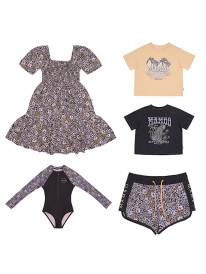Ed Oxenbould The Visit
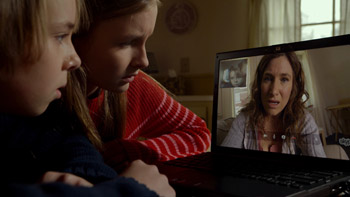
Ed Oxenbould The Visit
Cast: Ed Oxenbould, Kathryn Hahn
Director: M. Night Shyamalan
Genre: Comedy, Horror
Synopsis: Writer/director/producer M. Night Shyamalan (The Sixth Sense, Signs, Unbreakable) and producer Jason Blum (Paranormal Activity, The Purge and Insidious series) welcome you to Universal Pictures' The Visit. Shyamalan returns to his roots with the terrifying story of a brother and sister who are sent to their grandparents' remote Pennsylvania farm for a weeklong trip. Once the children discover that the elderly couple is involved in something deeply disturbing, they see their chances of getting back home are growing smaller every day.
There are only three rules when you come to Grandma's house:
1) Eat as much as you want.
2) Have a great time.
3) Don't ever leave your room after 9:30 p.m.
The Visit
Release Date: 24th of September, 2015
About The Production
Back to His Roots: The Visit Begins
When moviegoers first heard the name M. Night Shyamalan in 1999, the introduction was accompanied by his worldwide phenomenon, The Sixth Sense. Since that time, the filmmaker has helmed hits that include Unbreakable and Signs, but he has wanted to get back to his independent roots and make a smaller picture that would speak to a primal, lifelong excitement: being terrified at the movies.
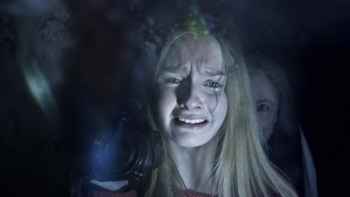 For the writer/director, who counts The Exorcist, Jaws, Psycho and Alien among his favorite slow-building thrillers, moviemaking is an inside-out process in which the plots of his stories arise from the characters themselves. To that end, Shyamalan is fascinated with the drama inherent in his characters' lives, and he believes that thrillers that don't begin with a solid dramatic base are not ones worth making. He gravitates toward the genre because he appreciates what it allows good storytelling, admittedly finding its suspense to be both visceral and mischievous.
For the writer/director, who counts The Exorcist, Jaws, Psycho and Alien among his favorite slow-building thrillers, moviemaking is an inside-out process in which the plots of his stories arise from the characters themselves. To that end, Shyamalan is fascinated with the drama inherent in his characters' lives, and he believes that thrillers that don't begin with a solid dramatic base are not ones worth making. He gravitates toward the genre because he appreciates what it allows good storytelling, admittedly finding its suspense to be both visceral and mischievous.
Recently, M. Night Shyamalan has missed the intimacy of smaller movies, and he got to work on a screenplay about a family that had broken apart and was trying to find its way back together. He says: 'I make a conscious effort to think about my stories in terms of the human beings involved, the implications of their actions and their relationships."
The filmmaker felt that this decision gave him the freedom to focus his energies primarily on the plotting of story and character development. M. Night Shyamalan notes: 'One day, I said, -We're going to make small movies from now on.' There is a speed that ideas come to me, as well as a certain time that they're meaningful to me. For a big movie that takes three years to make, it is just too long. I need to write it, make it and shoot it with the same power that came from the idea that made sense to me at that time." M. Night Shyamalan imagined the tale of Becca and Tyler, two children who were
abandoned by their father when their parents divorced. Intelligent, soulful Becca is an amateur filmmaker who is lensing a documentary about their trip to visit their maternal grandparents, an elderly couple whom they've never met. She and her younger brother, Tyler, an aspiring rapper who deals with anxieties through elaborate OCD rituals, say goodbye to their mom at the train station and head deep into Pennsylvania farm country to experience what they've missed for so many years: the unconditional love of grandparents. Finally, it is their chance to be spoiled and to feel like any other grandchild should…and to discover just why their mother has kept them away from her parents until now.
As he crafted the story of a family who was attempting to grieve their past and move on, M. Night Shyamalan was adamant that his shooting style reflects their brutally honest journey. Walking us through his strategy, he says: 'The film is in a first-person documentary format, and there's a level of veracity that's so hard to attain when you are scripting it. With movies such as Paranormal Activity or The Blair Witch Project, their benefit was that they were catching things spontaneously. It felt authentic."
Indeed, M. Night Shyamalan's inspiration from blockbuster producer Jason Blum's Paranormal Activity series helped him as he constructed The Visit. He explains: 'The film strategy is to make everything look like it was by chance, and that is challenging. Two of the characters in The Visit have cameras, so it is an approach of filming two different styles to distinguish between the two."
After the movie was shot and edited, M. Night Shyamalan reached out to Jason Blum"the producer behind such successful franchises as Sinister, Insidious and The Purge series, as well as the aforementioned Paranormal Activity movies. The two producers had been in contact for some time"indeed Jason Blum had been chasing M. Night Shyamalan for years to partner together on a project"and M. Night Shyamalan knew Jason Blum would give him his honest feedback about this personal film that he'd written, directed and fully financed.
Jason Blum immediately responded to the drama, humor and scares in the movie, and felt The Visit was a perfect fit for his long-term distribution deal with Universal Pictures. The producer shares that once he saw M. Night Shyamalan's film, plans for its theatrical release were an imminent next step: 'I've seen almost every scary movie in the past decade, and it's hard to unnerve me. I found The Visit to be simply terrifying. But it wasn't just wonderfully scary; Night made a film that is so incredibly fun. That's a rarity in the style of filmmaking and an extraordinarily difficult thing to accomplish in this genre."
The producer appreciates the moxie that his colleague has long showed, and he believes that it is his job as a curator and champion of smaller movies to think constantly about how to tackle films differently. Jason Blum notes: 'There's a tendency in Hollywood to believe, -If a breakout movie is successful, let's just repeat it.' I've long thought that you should do the exact opposite. M. Night Shyamalan brought us this mock-documentary-style film that has deliberate, beautifully composed shots, and I was as impressed that his movie was inspired by some of my favorite films like The Shining and Psycho."
Jason Blum reiterates that he is only interested in partnering with filmmakers who bet on themselves and have bucked the system: 'It has really been an honor to work with a director like M. Night Shyamalan on The Visit. He instinctively gets that terror is in what is unseen and just around the corner. The scares that M. Night Shyamalan achieves with this film are deceptively simple. He lulls us into a sense of safety and security with a relatable premise of two kids visiting their long-lost grandparents for the week and created something so terrifying and original."
Marc Bienstock, who for the past two decades has worked in the thriller genre as a producer, partners for the first time with M. Night Shyamalan and Jason Blum on a film. The producer discusses how the shoot of The Visit was intended to be lean and mean: 'We talked about the advantages of a small budget, which includes freedom and collaboration. M. Night Shyamalan is an open-minded guy with a focused vision, so he embraced that. As well, we shot the movie chronologically, which is not the norm."
As he prepares to see the film hit the big screen, M. Night Shyamalan says that he hasn't felt this energized in years, and that he's proud of the work: 'The Visit is formatted like no other movie. That is exciting and dangerous. The main character is a 15-year-old filmmaker who believes in the power of cinema. It is me being a kid again wondering if I believe in filmmaking as magic."
Meet the Family: Casting the Thriller
With a modest production budget and a core cast of only five people, at times, M. Night Shyamalan's latest film resembles an intimate play…all the better to draw tension from the cast and watch as terror unfolds on viewers' faces.
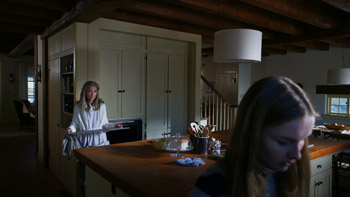 When it came time to choosing his actors, he, alongside casting director Douglas Aibel, were painstaking in their selections. The writer/director explains his rationale in selecting the performers: 'The cast was chosen with purity, and the characters were written with purity. I picked these individuals from around the world to star in this movie. When we did the read-through, I realized this might be my favorite constellation of actors. It is as if these people were the people that I wrote in the script."
When it came time to choosing his actors, he, alongside casting director Douglas Aibel, were painstaking in their selections. The writer/director explains his rationale in selecting the performers: 'The cast was chosen with purity, and the characters were written with purity. I picked these individuals from around the world to star in this movie. When we did the read-through, I realized this might be my favorite constellation of actors. It is as if these people were the people that I wrote in the script."
To portray the role of burgeoning director Becca, M. Night Shyamalan cast Australian actress Olivia DeJonge, who has been impressing audiences in her native country for several years. The young performer discusses what attracted her to the role: 'The Visit is such a raw story that has you on the edge of your seat. My mom and I were reading the script, and by the end we were hyperventilating. It is so crazy and incredible."
One of the reasons that M. Night Shyamalan wanted her for the part was that Olivia DeJonge and her character share a deep love of cinema. 'Both Becca and I have an interest in filmmaking," she tells. 'I love making short films, which I do a lot of in school. She's also complex and real, which is something that's very rare. She has values and morals, and I really connected with her."
Olivia DeJonge appreciated that her director was willing to allow her to co-create the character he'd written so fully. 'It was a godsend to be able to develop Becca with M. Night Shyamalan. He not only has a crazy imagination, but he is easy to talk to and very open. He practically is Becca, so it has been great to be able to work out parts of the script with him that were difficult for me to portray. He helped us to develop characters and relationships, ensuring we brought the best to the table for this film to succeed."
Because her mom is free-spirited and freewheeling, Becca has had to grow up fast and become a mother figure to Tyler since their parents' divorce. Discussing the family dynamic, Olivia DeJonge offers, 'Becca and Tyler blame themselves for their father leaving. They think they either did something wrong, or they weren't good enough to make him stay. They are having trouble coming to terms that it is not their fault."
That self-doubt makes Becca's visit to her grandparents even more important to the teenager. 'Becca is a loving parental figure to Tyler, but at the same time she wants a complete family," the performer continues. 'She loves her mom, brother and grandparents; she wants everyone to be one big happy family. It comes from a genuine place, and that's what makes her such a special character."
Fellow Australian performer Ed Oxenbould, who became known to international audiences through his starring role in the family comedy Alexander and the Terrible, Horrible, No Good, Very Bad Day, was brought on board to play Becca's younger brother, Tyler. Ed Oxenbould explains why he was excited to join this team of actors: 'What made me fired up about The Visit was the writing. The script is hilarious, dramatic, suspenseful and creepy. It's just a great story, and the ending is amazing."
He also appreciated that his character wasn't a stock young boy brought in simply for comic relief and cheap scares. The younger sibling is dealing with crippling obsessive-compulsive tendencies, which have become debilitating since their father abandoned them. Says Ed Oxenbould: 'Tyler is a nice and sensitive kid. Since his dad left he has some problems. He acts tough and comes out of his shell with the -T-Diamond' persona."
In spite of his OCD, Tyler"rather, 'T-Diamond""is very much the comic relief of the film. Oxenbould offers that his director helped him a great deal as he prepared, suggesting that he draw inspiration from one of today's superstar's first films: 'M. Night Shyamalan told me some movies to watch with scenes that might help me. I watched Empire of the Sun, with Christian Bale. He had very bold acting at a young age. Every night I went through the script with my parents and analyzed everything."
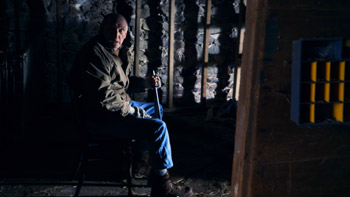 It wasn't all deep method acting, however. Ed Oxenbould recounts, 'There's a scene where Tyler switches into his T-Diamond style. I had to rap hardcore and could barely keep my laughter in. I could tell that Night was giggling behind the monitor, too."
It wasn't all deep method acting, however. Ed Oxenbould recounts, 'There's a scene where Tyler switches into his T-Diamond style. I had to rap hardcore and could barely keep my laughter in. I could tell that Night was giggling behind the monitor, too."
Fortunately, it wasn't difficult at all for Ed Oxenbould and Olivia DeJonge to get into character as siblings who alternately care for and annoy one another. Of his counterpart, the young actor commends: 'Olivia DeJonge is fantastic, and we get along like brother and sister. Her acting is amazing. She is like M. Night Shyamalan in the sense that she can be really serious but is always ready to have a bit of fun."
That sense of play on set helped Ed Oxenbould and Olivia DeJonge to bond…just in time for them to head to some very dark places with their characters. Discussing her on-screen brother, Olivia DeJonge shares: 'Tyler is a crazy character, and his facial expressions and one-liners make him hilarious. At the same time, he's a germaphobe and puts the rapper persona on. In reality, he's like every other 12-year-old boy. He loves his mom and sister. As much as he puts up these barriers, he has a soft inside."
Their interactions would lead up to one of the most powerful scenes in The Visit, when Tyler flips the script on Becca and has her sit for an on-camera interview. Olivia DeJonge recalls that powerful day: 'Emotionally, the hardest scene was Becca's final interview for her documentary when she's outside with Tyler. He gets her to say something that she's never told anyone before, and it's extremely emotional. That was one of the harder ones for me to do, but I think it turned out well."
As Becca and Tyler continue to grow closer and the story's terror is revealed, they must deal with the ever-increasingly odd behavior of their Nana and Pop Pop, played brilliantly by Tony Award-winning actress Deanna Dunagan and Scottish career character performer Peter McRobbie. Oxenbould was so impressed by the seasoned actor that he takes with him tips for his craft that he'll use years from now. He lauds: 'Deanna Dunagan and Peter McRobbie nail every scene they're in. Their characters are very spooky."
Although a seasoned actress of stage and screen, Deanna Dunagan readily admits she had some hesitation before agreeing to read for the role of Nana. She explains how she became involved in The Visit: 'My agent called me and said I had an audition to play a granny. I was not interested in playing a granny, but once he told me it was M. Night Shyamalan, I was in. If you look through his catalogue of films, he has an incredible imagination."
When she met the filmmaker and listened to him describe his vision for the movie and her character's arc, she realized she needn't have worried. 'Nana has secrets and is not all she appears to be," shares Deanna Dunagan. 'She is not entirely the sweet grandmother that you see in the beginning. She definitely has strength that you don't see."
As did her fellow performers, the actress appreciated that M. Night Shyamalan remained open to her ideas throughout production. 'M. Night Shyamalan is a good listener," notes Deanna Dunagan. 'He was collaborative when it came to what we reveal with the character. As well, he would have us do a scene several different ways, so it was always a challenge to create this person who changed throughout the script."
Fortunately for the cast and crew, the dark days experienced by their characters were tempered by levity on set. Deanna Dunagan sums up their thoughts on working with their boss: 'A day with M. Night Shyamalan is like a day in the sunshine. He exuded warmth, and the whole crew soaked it up and gave it right back. I have never worked with anyone more joyful and happy to be working in film. He was ebullient and appreciative of his actors."
Of her two grandchildren, Nana grows closest to Becca during the course of their week together. Although they start off in the kitchen together, where she cooks them big breakfasts and makes a seemingly endless supply of cookies, their time together grows dark when Becca asks to interview Nana and tries to get to the root of why her mother stopped talking to her grandparents.
Sharing her character development and process, Deanna Dunagan says: 'My favorite and most difficult scene was the interview with my character's granddaughter, Becca. 'Nana is very happy and sort of affected in the interview because she's never been on camera before. Still, Nana doesn't really reveal anything during the interview. She answers a couple of questions like, -What is your favorite color?' and -What is your favorite animal?' in a flirtatious and affected way, enjoying her moment. But when Becca asks her about Becca's mother, the interview becomes very real and unsettling for both of them."
Portraying a character who vacillates between deep tenderness and hints of massive psychosis was, admittedly, exhilarating for Deanna Dunagan. She reflects that it a welcome challenge to portray Nana in different ways during multiple takes throughout production. She reflects: 'It's interesting because, even though he wrote the film, M. Night Shyamalan "just as I did"learned about the character as we went along. We shot multiple takes of each scene to try out different personae for Nana. That allowed Night options to use during the final composition of the film."
Nana's steadfastly loyal husband, known to Becca and Tyler only as Pop Pop, can hardly contain his excitement that his beloved grandchildren are finally in his arms. Portrayed by Peter McRobbie, who drew upon his decades-long career as a character actor to inform his choices, the role is a study in contrast. The actor explains: 'Pop Pop has these beliefs about the world, which do not necessarily correspond to what other people see as reality. His behavior might be described by an outsider as bizarre' or insane. But within his inner world, you know that everything that he does, says and thinks has logic."
Peter McRobbie appreciated having the production's screenwriter so easily accessible on set. Commending M. Night Shyamalan's style, he says: 'It's not the usual sort of middle-of-the-road film writing. My character is bizarre, so his motivations needed to be clear and he needed to be humanized. He couldn't just be this off-the-wall kind of guy. Even if you're playing a monster, you have to find the humanity in this man." He pauses: 'The meaty scenes are the ones that I find easiest to deal with. When the emotional content is so deep and subconscious, you get a lot to chew on. That makes the work more accessible."
Echoing Deanna Dunagan, Peter McRobbie felt it was refreshing that their director allowed them such leeway in their interpretation of his words. That freedom was especially helpful to have on reserve during the third act of The Visit, when Nana and Pop Pop reveal a darker side of their personalities. Says Peter McRobbie: 'Working in a collaborative way with M. Night Shyamalan has been a joy because he was always open to hearing what we had to bring to the table. As well, he created this kind of friction that creates sparks. That's the process that I'm interested in. It's what keeps me doing this work."
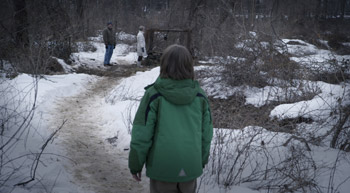 It was not lost on any of the cast that they were being led by a director who readily admits that he's a kid at heart. M. Night Shyamalan enjoys the scares as much or more than anyone on one of his productions. Commends Peter McRobbie: 'What appeals to me as an actor is his sense of humor, his sense of play. He enjoys this. To have someone directing you that has a sense of humor and a sense of joy in what he's doing is an incredible gift. There was a lot of laughter on set, and that puts everyone at ease."
It was not lost on any of the cast that they were being led by a director who readily admits that he's a kid at heart. M. Night Shyamalan enjoys the scares as much or more than anyone on one of his productions. Commends Peter McRobbie: 'What appeals to me as an actor is his sense of humor, his sense of play. He enjoys this. To have someone directing you that has a sense of humor and a sense of joy in what he's doing is an incredible gift. There was a lot of laughter on set, and that puts everyone at ease."
Pop Pop is a much more internal character than his outgoing wife, and Peter McRobbie thinks that his character feels it is his job to moderate her behavior and be her equilibrium.
As they both had to go to some very dark places in their psyches, Dunagan drew on the support of McRobbie, and vice versa. She states: 'Pop Pop is devoted to Nana. He is always taking care of her. He always wants to do what will make her happy. He is an interesting and complex man, just as she is an interesting and complex woman. He's trying to give her the happiest week of her life. That is his only goal."
Reflecting on the cast's ability to lean upon one another during the production, Olivia DeJonge says: 'Becca juggles so many emotions while trying to maintain a strong persona for her brother and trying to hold together the family that she wants. Trying to juggle three or four emotions in just a couple of lines is very difficult. Working with M. Night Shyamalan, Deanna Dungan, Peter McRobbieand Ed Oxenbould helped make those multiple emotions easier to portray."
The primary foursome of actors are joined in key scenes by Kathryn Hahn, who plays Becca and Tyler's mother. Known for her brilliant comedy work in such films as We're the Millers, Wanderlust and The Secret Life of Walter Mitty, Hahn is part of the current crop of comedic actors who aren't afraid to go to outrageous places. She found that this fearlessness came in handy when it came to handling a few of the terrifying scenes in The Visit.
Portraying a mother who moves from cautious excitement at her children's finally meeting their grandparents to sheer terror at what is happening away from her care proved taxing for the performer. Still, Kathryn Hahn had a unique challenge that her colleagues didn't have to face. She explains: 'Most of my scenes were on a Skype call, shot days or weeks after the kids had shot their sides. That was hard. I tried to be there for their coverage off camera so I could remember the rhythms, because I had to match the timing perfectly when it was my coverage. It created a beautiful acting challenge, to hear their pre-recorded side of the scene in my ear through an earpiece and to try to respond with the exact same timing…but alive and new every time. That was difficult but so crazy exhilarating."
The actress echoes the entire cast's experience with the scariest element of the production: the bone-chilling temperatures. When asked what was most challenging, Hahn laughs: 'Besides the cold? I remember driving in my rental car in a snowstorm from my hotel to the production office completely lost and isolated. I was in an ocean of white, so cold my water bottle froze on the dashboard. That definitely created a sense of urgency and dread and helplessness and helped the vibe."
Still, she admits that braving the freezing weather was absolutely worth it. 'I especially loved those rehearsals with M. Night Shyamalan and the kids, creating a history of these three together. That is my happy place as an actor. Well, that and M. Night Shyamalan's beautiful mind. I loved every second of it. It felt like rehearsing a play."
In supporting roles in The Visit are Celia Keenan-Bolger as Stacey, a worried friend of Nana and Pop Pop's who comes to the farmhouse to express her frustration with recent events; Samuel Stricklen as the train conductor who is the encouraging recipient of T-Diamond's raps; and Patch Darragh as Dr. Sam, a physician from the nursing home where the elderly couple volunteers.
Jason Blum notes that, down to the film's supporting roles, his writer/director's casting decisions were strategic and precise: 'M. Night Shyamalan just has this delicate touch when it comes to selecting the ideal actor for the specific role. He's able to choose extraordinary talent who bring his words to life and draw the audience into their characters."
Lensing Terror: Design and Shooting
As M. Night Shyamalan was raised in and keeps a home in this part of the country, it is no surprise that the setting of The Visit is the eerie, isolated and authentic farmland of Pennsylvania. Producer Bienstock explains the rationale: 'Night is a hometown boy, and Philadelphia is where he makes all his movies. He is passionate about that."
A fastidious storyboarder, M. Night Shyamalan painstakingly designed The Visit from Becca's perspective, allowing the film to begin with 'I'm making a movie about my family" and unfolding into 'What have I discovered?" He reflects: 'Becca has a beautiful eye and heart, and she sees the world as beautiful. Her being a filmmaker motivates her character, and the film itself is an extension of that."
His eye for perfection would prove to be invaluable, as it was crucial to the writer/director that the scenes be staged a certain way to build terror. That included the scenes being shot in order, which allowed the performers to discover their characters as the screenplay's terror unfolds. Bienstock discusses this commitment to authenticity: 'The Visit is shot in documentary format. Night has been true to what a documentary looks like, then enhancing that just a bit. In fact, 99 percent of this movie is -what you see is what you get.' There is no CGI or VFX."
Naaman Marshall, who served as supervising art director on such blockbusters as The Dark Night Rises and Dawn of the Planet of the Apes, makes his production design debut with The Visit. He discusses his inspiration board: 'Colors are a big part of the storytelling in this film. Night and I had the idea of keeping the children in vibrant colors and having everything else in muted tones. The children are the energy in the film. We were able to work with set decorators to ensure the house was filled with monotone colors, and with costume designers to have a pop of color in their costumes."
Of course, when it came time for Nana to chase after the kids under their home, Marshall and M. Night Shyamalan wouldn't actually put the actors under a house. Therefore, it was time for a set to fill in for those scenes. The production designer explains: 'There is a pivotal part of the film when the kids start to realize there is something desperately wrong with Nana, which takes place in a crawl space. We needed a space under the house that was inviting enough for the kids to play in, but also a place that you could feel lost in."
Director of photography Maryse Alberti, who is a legend in the documentary field as well as the respected cinematographer of such awards fare as The Wrestler, lensed the film in documentary style to make the audience understand the fear and terror that Becca and Tyler are experiencing as they shoot their own movie. Ed Oxenbould explains: 'Everything is shot with handheld cameras because it is a documentary. The film is so clever and planned."
The tight spaces favored by M. Night Shyamalan, Alberti and Marshall amped up the fear. Olivia DeJonge walks us through a particularly challenging scene: 'Physically and emotionally, the most difficult scene for me was with Deanna Duagan in the bedroom. It was hard balancing everything that was going on."
Peter McRobbie marvels at the design decision: 'The film is shot by kids holding cameras. So I thought about how your behavior changes when people are filming you. That was the first little layer of paint that I put on the canvas."
One aspect of traditional postproduction that The Visit would not have is a composed score. For years, M. Night Shyamalan has wanted to make a film without one, and he felt this movie was his best chance. As everything the audience is seeing is what Becca and Tyler record on their own, a score wouldn't make sense for this thriller. 'I feel like the intensity I wanted here couldn't be achieved with a score," the director states. 'The sound effects are the score and are designed to keep you off-kilter."
Editor Luke Ciarrocchi is the first to admit that the lack of score was a challenge: 'That's been interesting, figuring out how you drive one scene into the next scene without a score," he says. 'We learned that you need to rely heavily on music in conveying to the audience what they should feel. Usually, if your performances aren't getting the audience there, you can easily turn it up a notch with the score. But we didn't have that luxury to say, -Let's just bring in some creepy music.'" That doesn't mean, however, that the ambient sounds aren't spectacular.
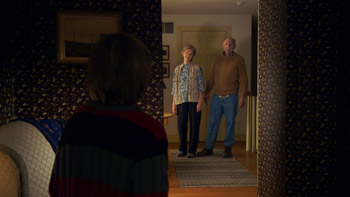 Relying upon a stellar sound team that includes supervising sound editor Skip Lievsay, sound mixer David J. Schwartz, sound effects editors Wyatt Sprague and Larry Zipf, assistant sound editor Caleb Townsend and sound mix engineer Dan Timmons, the director was able to capture every creak and every slowly opening door of Nana and Pop Pop's home. Adding an equally eerie soundtrack from multitalented music supervisor Susan Jacobs accomplished the goal of a composition-free film.
Relying upon a stellar sound team that includes supervising sound editor Skip Lievsay, sound mixer David J. Schwartz, sound effects editors Wyatt Sprague and Larry Zipf, assistant sound editor Caleb Townsend and sound mix engineer Dan Timmons, the director was able to capture every creak and every slowly opening door of Nana and Pop Pop's home. Adding an equally eerie soundtrack from multitalented music supervisor Susan Jacobs accomplished the goal of a composition-free film.
When it came to costumes, Amy Westcott, a costume designer known for her stunning and impressive work on such films as Black Swan and HBO's Entourage, supervised the wardrobe team. M. Night Shyamalan wanted the symbolism for which he's well-known to extend to the costumes. 'The kids are wearing primary colors to represent their life force set against the snow of the fields," he says, 'while the grandparents are restricted to grays and browns. Amy and I wanted to show that their life force is in danger and make the audience feel just as scared as Becca and Tyler become."
With the production wrapped, the cast and crew reflect on their experiences with The Visit. Despite hours in a crawl space, creeping about the old farmhouse at night and running from terror in the dark, they will remember the joy of the production…and the many laughs. Perhaps it's best that the actor who plays the film's documentarian has the final word. Concludes Olivia DeJonge: 'You can pretty much detect M. Night Shyamalan's laugh anywhere. You know you've done well when you hear Night's laugh."
The Visit
Release Date: 24th of September, 2015
MORE


